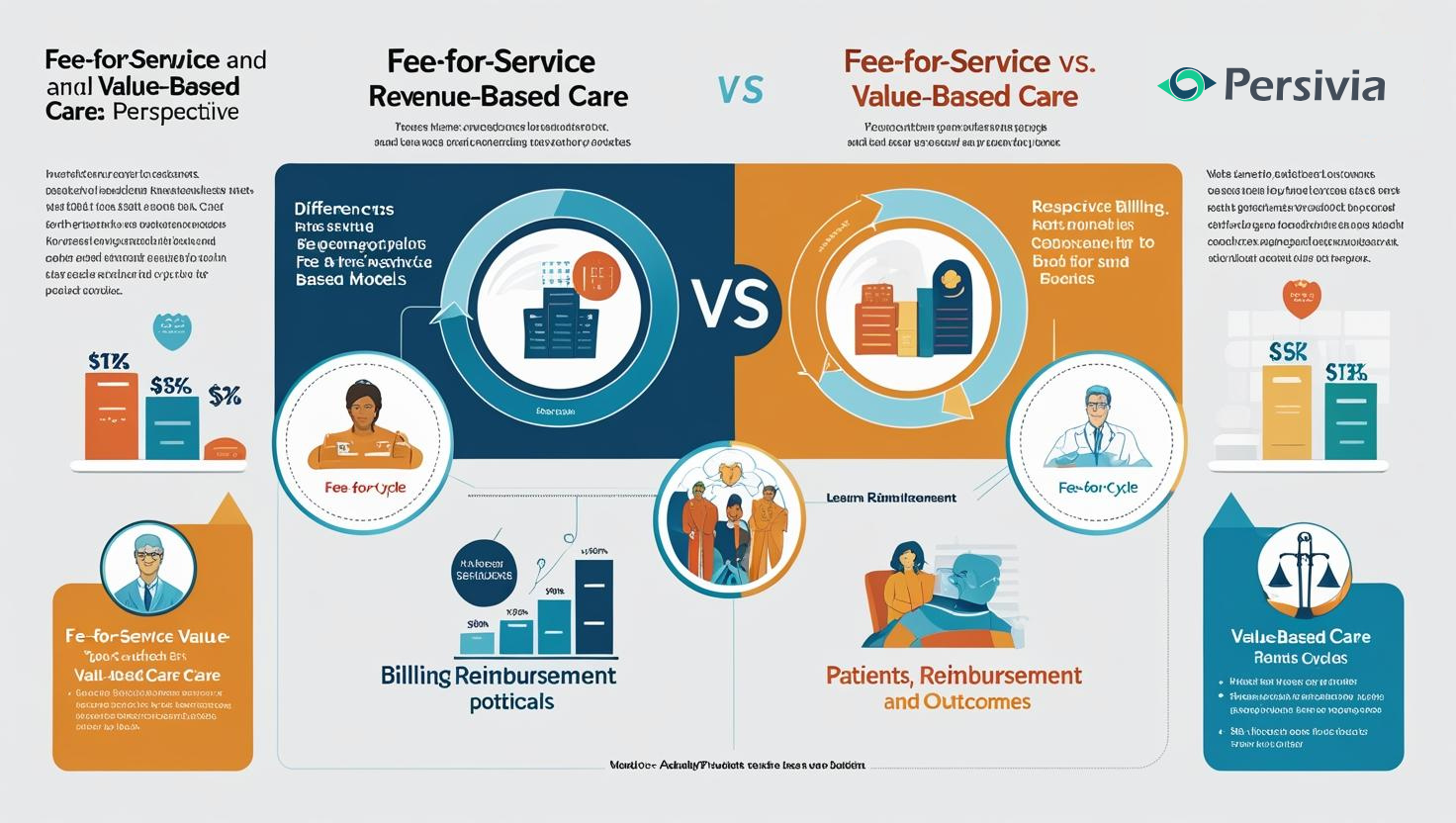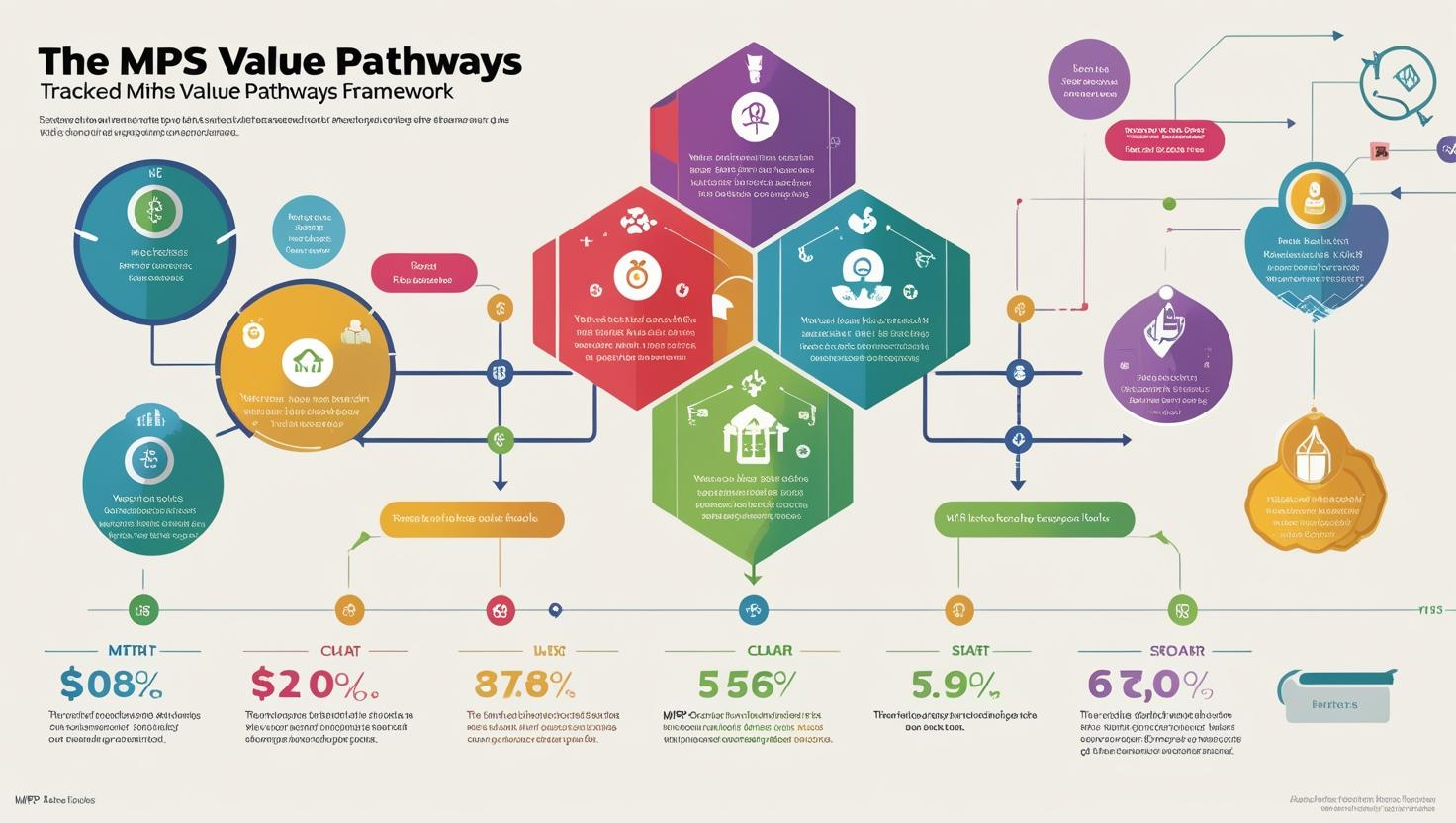The impact on the revenue cycle of the two reimbursement models, Value-Based Care (VBC) and Fee-for-Service (FFS), varies greatly. FFS turns claims filing into a high-volume service as it incentivizes providers to provide more services for a higher payment, often resulting in overuse. On the other hand, VBC reduces its payment to encourage better performance in patient care. While FFS guarantees a temporary revenue boost at the expense of long-term sustainability, VBC lowers costs by promoting preventative care. To strike the correct balance, providers must evaluate their patient demographics, compliance requirements, and financial goals.
The two very distinct systems that modern healthcare companies operate under are Fee for Service Vs Value-based Care. These models impact everything from revenue flow to patient outcomes. The right decision has a significant effect on financial health, compliance, and long-term viability.
Due to the expansion of population health management and the growing emphasis on patient-centered outcomes, value-based models are currently at the forefront of industry discussions. Nonetheless, many doctors still depend on FFS to maintain cash flow in operations that involve a lot of procedures.
Even though each model has a place in modern healthcare, it is imperative to align one’s revenue cycle plan with the most sustainable payment option. This means understanding how these models affect payment, which is the cornerstone of every practice, in addition to therapeutic outcomes.
What is Fee-for-Service?
Providers bill separately for each treatment, operation, or consultation under the conventional fee-for-service (FFS) payment model. Revenue increases when more services are provided.
In this model:
- The emphasis lies in throughput and procedural frequency.
- Payment is disconnected from patient outcomes.
- Accurate coding and prompt claim filing are top priorities for billing departments.
Despite its simplicity, it has the potential to promote overuse and raise healthcare expenses, which might put pressure on the entire revenue cycle. FFS is still a successful structure for high-intensity operations and short-term gains.
What is Value-Based Care?
Value-Based Care (VBC) links health outcomes with provider reimbursement. Compensation is based on how successfully providers manage care, reduce readmissions to hospitals, and enhance patient happiness rather than quantity.
Key principles include:
- Focus on preventive care.
- Measured performance using defined metrics.
- Payment is structured around total patient wellness.
Integrating value-based care vs fee-for-service often requires significant operational changes, but it creates the conditions for scalable, sustainable growth.
It’s not only about performance incentives. VBC demands improved care coordination, data transparency, and stakeholder alignment to work effectively.
Comparing Cost and Patient Experience
In terms of costs:
- FFS can escalate expenses as each interaction generates a bill.
- VBC limits cost growth by reducing unnecessary interventions.
For patients:
- FFS sometimes prioritizes volume over satisfaction.
- VBC rewards providers for patient satisfaction and health improvements.
The change is experiential rather than just financial. When healthcare professionals prioritize results above transactions, patient loyalty increases.
Why Value-Based Care Leads
Value-based care is becoming more and more popular among providers and healthcare systems because of its quantifiable effects on financial sustainability and results. Payers and legislators are still promoting incentives that prioritize quality over quantity as the model develops. At every level of the system, this change is changing the frameworks for delivering care.
Incentivizing Preventive Care
Value-based frameworks change the perspective to one of proactive interventions rather than reactive ones. Providers prioritize preserving population health through early screenings and chronic care monitoring rather than waiting for problems to arise.
Health systems that effectively control illness progression, minimize complications, and lower admissions are rewarded under this strategy. In addition to lowering expensive events, preventive care increases patient participation and trust over the long run.
VBC encourages regular screenings and wellness programs. Early intervention increases the likelihood that providers will prevent expensive acute episodes.
Encouraging Collaboration
Multi-disciplinary teams thrive in this model. Collaboration ensures smoother transitions and unified treatment strategies, improving both efficiency and results. It also encourages shared decision-making across specialties, which leads to more informed care plans and fewer clinical silos.
Addressing Health Equity
VBC minimizes disparities. Providers focus on delivering positive outcomes to every patient, regardless of socioeconomic status. Health systems operating under VBC are encouraged to track and address social determinants of health more actively.
Achieving Cost Efficiency
By reducing overuse and emphasizing streamlined care, VBC creates real savings for both payers and patients. These savings can be redirected toward expanding care access or investing in new health technologies.
Enhancing Long-Term Care Quality
With a focus on sustainability, VBC strengthens care delivery frameworks. It supports systems that reward the right actions over repeated interventions. Over time, this leads to more consistent care practices and better long-term patient management.
Revenue Cycle Shifts
The FFS model frequently puts pressure on administrative resources, despite its widespread adoption. Revenue teams have to handle denials and rework while processing a large number of claims. The predictability of cash flow may be impacted by this pressure, which may also affect the timeliness and accuracy of payments.
How FFS Operates
The FFS revenue cycle emphasizes billing operations. Each interaction is transactional, requiring:
- Accurate CPT/ICD coding.
- Complex denial management processes.
- High volume claim workflows.
Errors in documentation directly impact cash flow. Administrative burden is heavier, and patient outcomes don’t affect reimbursement.
How VBC Reshapes the Cycle
VBC is less about transactional billing and more about ongoing monitoring. Providers rely on performance-based contracts that prioritize:
- Quality scores.
- Risk-adjusted patient populations.
- Care coordination.
A strong Digital Health Platform is vital for supporting this workflow. It provides insights, performance dashboards, and real-time metrics tracking.
Pro Tip: Build internal analytics capacity before diving deep into value-based contracts.
Picking the Best Fit
Choosing between models depends on specific practice goals:
- High-volume surgical centers may find more comfort in FFS.
- Primary care groups or chronic disease clinics benefit from VBC.
Many organizations now use a hybrid system, gradually blending value incentives with traditional billing. This transition approach balances risk and reward.
Clinics that manage patients with multiple chronic conditions may find that value-based care supports long-term efficiency and improved revenue forecasting.
Key Operational Considerations
Healthcare organizations exploring value-based models must:
- Invest in data infrastructure.
- Redesign clinical workflows.
- Align teams with performance goals.
- Establish partnerships with payers.
Care pathways, population risk stratification, and data transparency are the foundation for success under VBC. Without these components, even the best clinical teams struggle to meet incentive benchmarks.
Such a change requires cultural transformation as much as technical adaptation.
Wrap Up
Fee for Service Vs Value-based Care will remain a defining decision for organizations navigating today’s healthcare economics. One favors procedure-based revenue, the other outcome-based rewards.
Successful transitions begin with understanding internal capacities and choosing models that align with both financial and patient goals. Whichever model prevails, readiness to adapt will determine sustainability.
If you’re preparing to transition your operations, streamline your revenue cycle, or boost outcomes without increasing overhead, it’s time to evaluate smarter solutions.Persivia empowers healthcare organizations to manage this shift with confidence. By combining real-time analytics, clinical intelligence, and contract management, its Digital Health Platforms support VBC, hybrid, and FFS workflows in one place.






